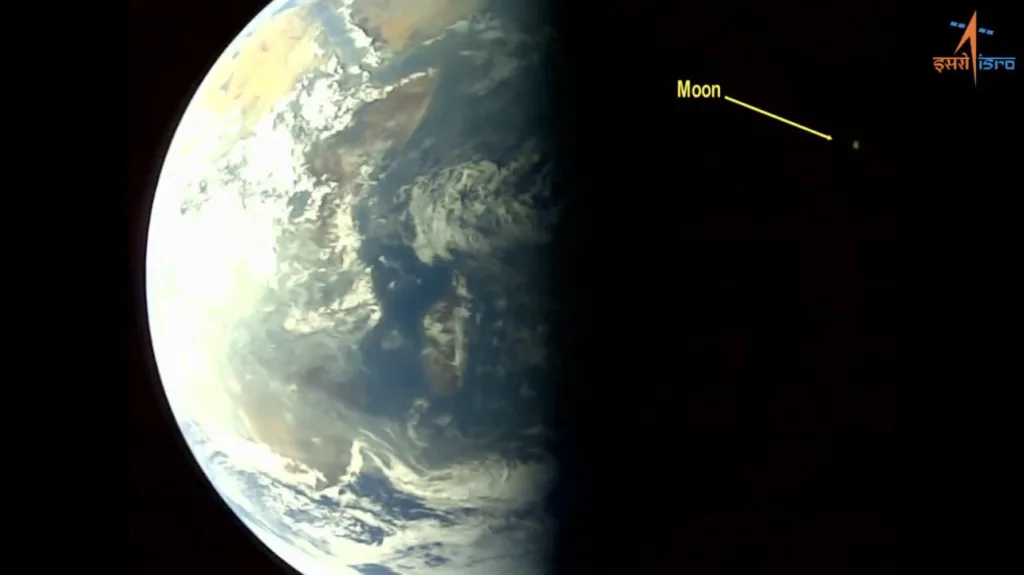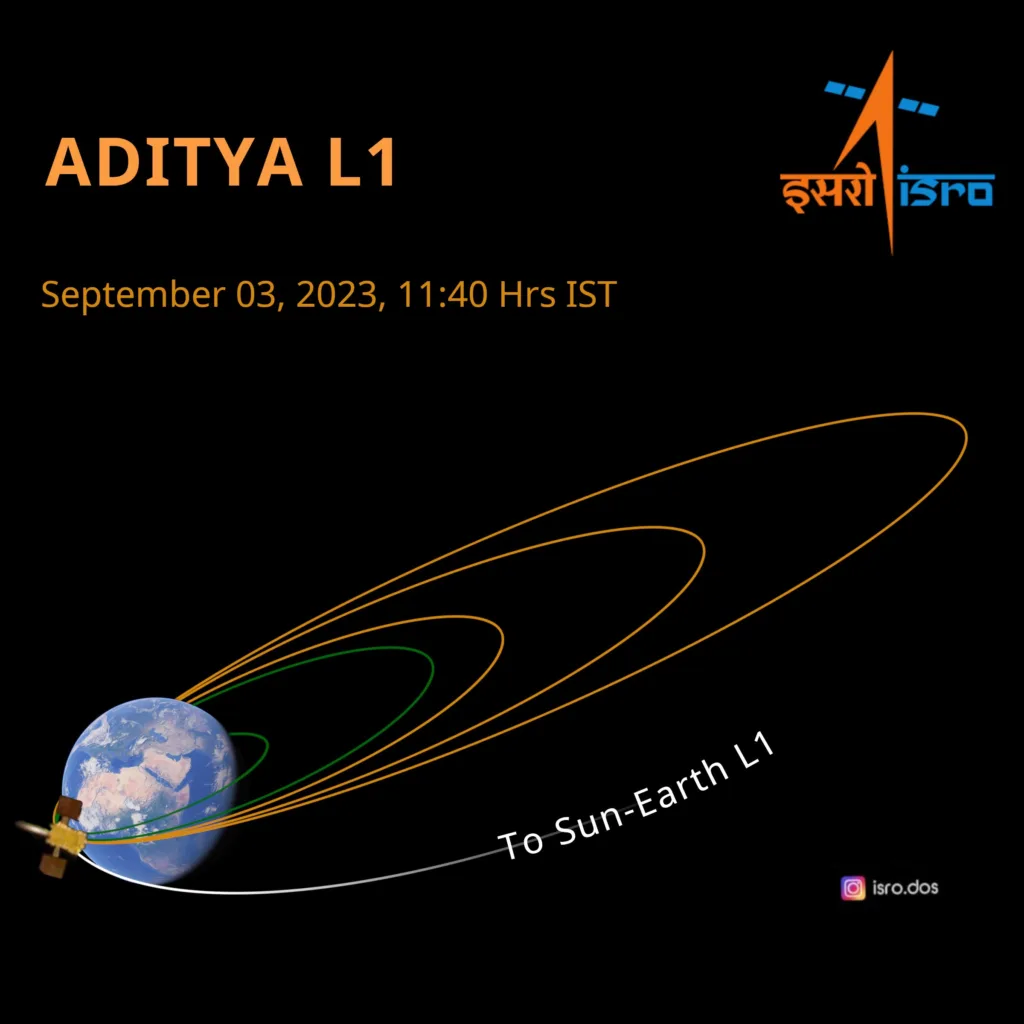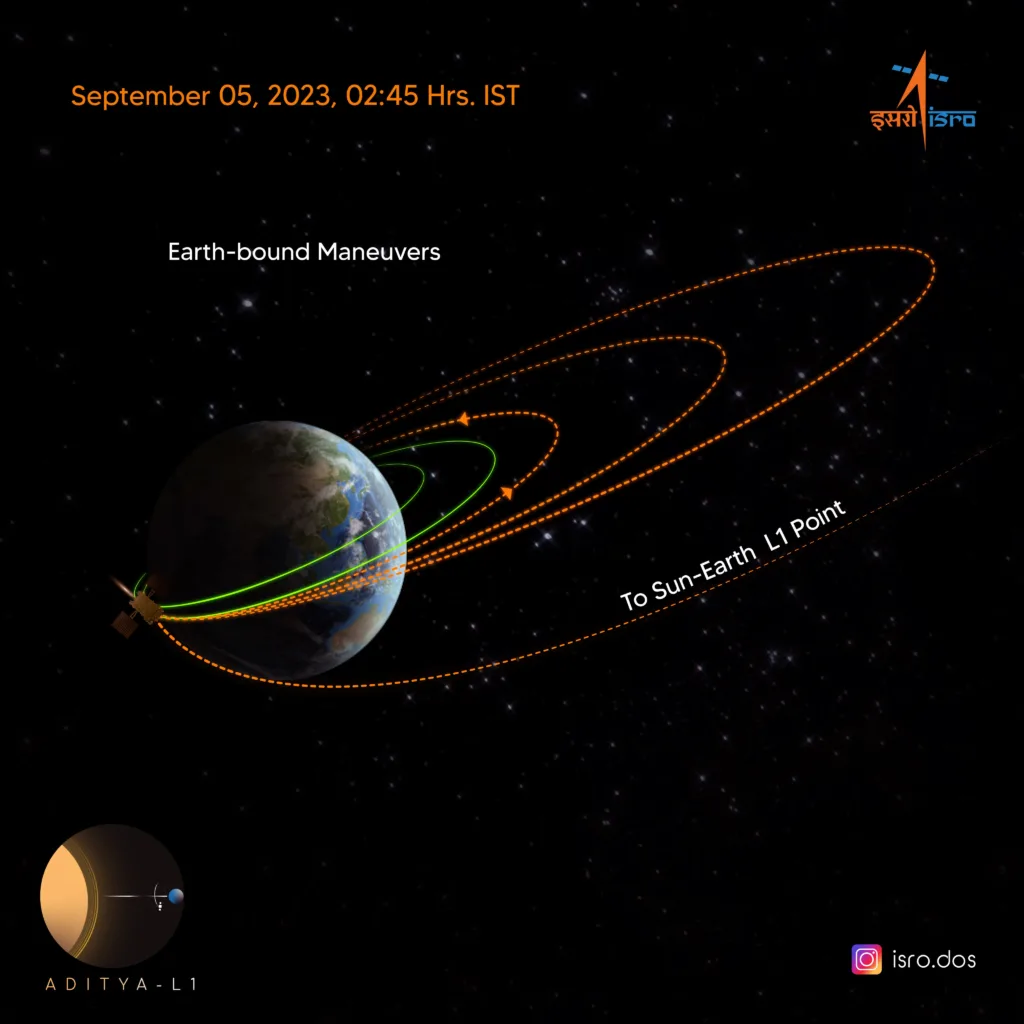Aditya L1 captures first selfie and images of earth and moon from space. Read to know more.

Adhitya L1 is named after the Surya Bhagavan from Sanskrit. This is the Country’s first Solar Spacecraft mission. Adhitya L1 is a coronagraphic spacecraft to study the solar atmosphere designed by the Indian Space Research Organization (ISRO).
Coronographic spacecraft is like having a telescopic attachment to block out the direct light from the bright sun. Nearly after a week of launch the solar spacecraft has captured a selfie while its journey to the sun.
Table of Contents
ISRO post of Aditya L1 through Twitter
“Onlooker! Aditya L1, destined for the Sun-Earth L1 point, takes a selfie and images of Earth and Moon. #Aditya L1” posted by the Indian Space Reasearch Organization on ‘X’ formerly Twitter on Thursday.
The video posted by ISRO shows a part of the spacecraft captured by the on-board camera. This video also shows two main science experiments carried by the mission. It shows VELC (Visible Emission Line Coronagraph) which deeply studies the very inner layers of the solar corona which is not studied by any other missions and the SUIT (Solar Ultraviolet Imaging Telescope) which helps in studying the various layers of solar atmosphere in shorter UV wavelengths.
This video is also showing a part of earth hemisphere which is lightened by the sun rays while making the rounds around the earth and picture of moon which is far away from the spacecraft.
The pictures are captured by on-board camera on September 4. The picture is really amazing where earth and moon are captured in one frame.
Aditya L1 second Maneuver Completed!
The first and second earth bound maneuvers were completed successfully. This is undergoing a series of maneuvers to raise its orbit as well as velocity till it can finally be slingshot towards the sun. The second earth bound maneuver is performed successfully from ISTRAC (ISRO Telemetry, Tracking and Command Network), Bengaluru.
First orbit attained is at a height of 245 km x 22459 km.

ISTRAC/ISRO’s ground stations at Mauritius, Bengaluru and Port Blair tracked the Solar mission Satellite during this operation. New orbit attained is at a height of 282 km x 40225 km.

The third earth bound maneuver is scheduled on September 10,2023 around 02:30 Hrs. IST.
Aditya L1 Lifespan
Once injected into the solar path, the spacecraft will take around four months to travel the 1.5 million kilometers distance to reach the L1 point of the sun which provides the unobstructed 24/7 view of Sun.
The Planned mission life of Aditya L1 is five years but it is likely to stay for much longer than expected.
“The beauty of the L1 or any other Lagrange point orbit is that the gravitational pull exerted by the two celestial bodies – in this case, the Sun and the Earth – exactly balance each other out. This means the spacecraft hardly needs any fuel to stay its course. Although Aditya-L1 has been designed for a five-year mission life, it can last as long as 25 years,” a scientist from ISRO said.
“To study the faint light coming from the corona, we need to artificially block the bright light from the photosphere or the surface of the Sun. The catch in doing that is we may not be able to block only the photosphere – the size of the occulting disk is usually bigger than the photosphere.
If we assume the size of the photosphere to be 1 unit, the occulting disk has been of 2 units for previous missions. For the first time with the Aditya L1 mission we are trying to see as close as possible to the beginning of the corona with a smaller occulting disk that is just 1.05 times the photosphere,” said Prof R Ramesh from the Indian Institute of Astrophysics. The coronagraph on SOHO that was lost had an occulting disc of 1.1 times the radius of the sun surface.

